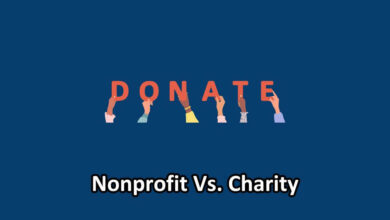Different organizations have different organizational needs. If you are in a formal organization, you will adhere to the formality of the organization. However, if your organization is informal, you would need to be flexible and committed to a more casual atmosphere. In this article, we will cover the core difference between formal and informal organization with a table and charts illustrating the key differences between them. The concepts of the blog have been arranged as follows.
What Is Formal Organization
A formal organization is one where the business has a clear hierarchy and there are defined roles within the company. Formal organizations usually have clear rules and procedures that employees must follow in order to attain specific goals and objectives of the company. This type of organization can be very effective, but it can also be quite rigid. There are many businesses out there that have a formal organization.
Moreover, such type of organization is deliberately created by the top-level management of the company. The purpose behind the formation of such an organization is the achievement of pre-defined goals over a period of time. In a Formal organization, the roles and responsibilities are assigned to the task force of the company on the basis of their abilities and experiences. The disadvantage of formal organization is that the social needs of the working staff(employees) of the organization may be ignored due to the pressurized environment.
Features Of Formal Organization
Some of the common features of the formal organization are as follows.
- The formal organization has defined rules and regulations that must be obeyed by the working staff of the company.
- It experiences stable working conditions.
- Work is assigned to the employees on the basis of their capabilities and expertise.
- It emphasizes more on the job/work rather than the individual interrelationships and social needs.
What Is Informal Organization
An informal organization is a type of organization that is not predetermined or planned by management. It emerges naturally as people interact and work together. An Informal organization includes the patterns of behavior and relationships that develop spontaneously among people in an organization.
The informal organization is the social structure of the organization, including the relationships between people and groups. It is the “hidden” side of the organization, the part that is not written down in the formal rules and regulations. The informal organization is often more powerful than the formal organization because it reflects the true values and culture of the company.
The informal organization includes:
- Norms: unstated rules about how people should behave
- Values: beliefs about what is important and what is not
- Traditions: established ways of doing things
- Relationships: emotional bonds between people
Features Of Informal Organization
The characteristics of an informal organization are as follows.
- An informal organization does not possess any specific direction for the flow of communication as an employee at a lower position of job can directly contact the top-level management.
- There are no strict rules and regulations to be followed.
- Since the rules and regulations are not defined, an informal organization may experience unstable conditions.
Formal Vs Informal Organization(Comparison Table)
| Basis For Difference | Formal Organization | Informal Organization |
| Definition | It is the type of organization where the roles and responsibilities of each employee are pre-defined, whose authority and accountability are fixed by the top management of the company | It is the organization formed spontaneously within the formal organization by the mutual interactions and connections of the employees in order to satisfy their social and psychological desires |
| Purpose | It is formed to achieve certain goals and objectives | They are formed to satisfy their social and psychological wants |
| Nature | It is stable in nature and continues for a long time | It is not stable and may last for a very short time |
| Creation | They are deliberately created by the top management of the company | It is spontaneously created by the members of the organization |
| Communication | Official and formal | Grapevine |
| Focuses On | Focuses on the performance of the work | Focuses on interpersonal relationships |
| Authority | Formal organizations have a clear and documented structure of authority | It does not have a clear structure of authority. |
Key Differences Between Formal And Informal Organization
- A formal organization is one where the business has a clear hierarchy and there are defined roles within the company. On the other hand, an Informal organization includes the patterns of behavior and relationships that develop spontaneously among people in an organization.
- While the formal organization is deliberately created by the senior management of the business. In the contrast, the informal organization is spontaneously created by the individuals of the organization.
- A formal organization primarily focuses on attaining business goals and objectives. On the other hand, an informal organization is formed for satisfying the social and psychological needs of its workers.
- The size of the formal organization is larger as compared to the informal organization.
- A formal organization has a pre-defined set of rules that must be followed by every member of the company. On the other hand, an informal organization includes norms, values, relationships, and beliefs, that create a casual and flexible environment.
Conclusion
So to sum up this article, we can conclude that the main difference between formal and informal organizations is that formal organizations are created to achieve specific goals. On the other hand, informal organizations emerge spontaneously as people interact with each other. Formal organizations are also typically more structured, with a clear hierarchy and rules governing how members should behave. Informal organizations, on the other hand, tend to be more relaxed and organic in their structure.
Both types of organizations can be successful in achieving their objectives, but it’s important to understand the key differences between them before deciding which type is right for your needs.




4 Comments